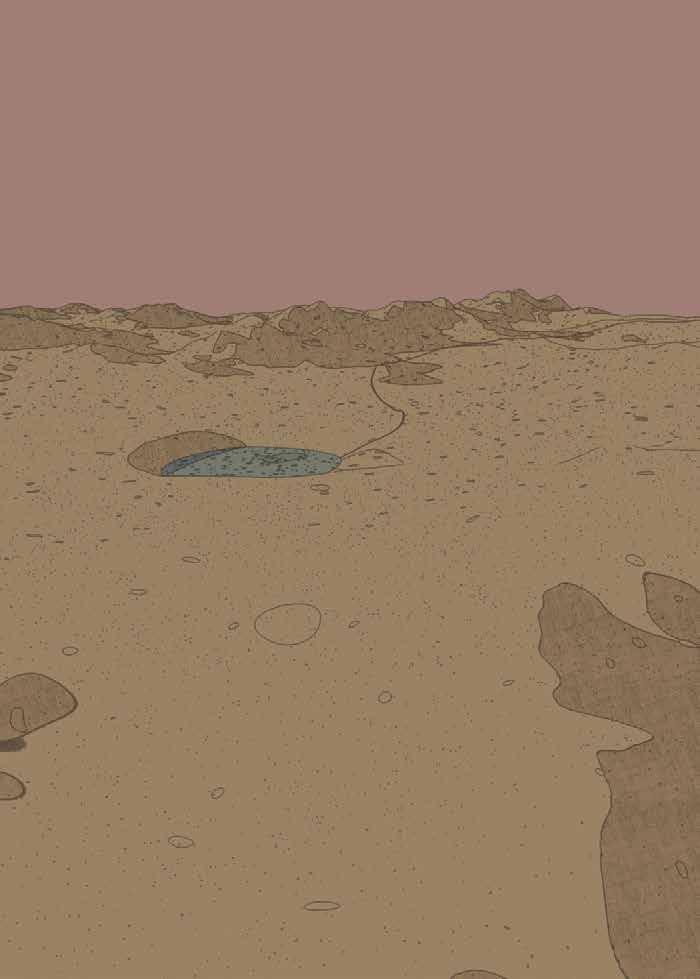
INTRODUCTION
It has been over 75 years since the world entered into the nuclear age. The consequences, conspiracies, and conflicts surrounding the nuclear bomb still fuel imaginations as well as investigations. Cinematic representations continue to provide reference and disambiguation to the momentous events in technological advancement. We as humans appear to still be infatuated with the onset of the nuclear age and its legacy. This obsession may be acknowledged as a product of the secrecy that surrounds nuclear technology as well as a need to seek understanding in realizing its full magnitude for the past, present, and future. For myself, it has become my mania in aligning the events of the nuclear age, specifically those surrounding the testing and use of nuclear weaponry to the field of landscape architecture. The environmental outputs of nuclear technology—radiation and contamination—have been well-documented and persist investigation. These instances only constitute a small portion of the systems that fully embody what comprises contemporary expressions of landscape. Generated economies, social conditions, and territorial identities as byproducts of the incidents of nuclear scenarios have the ability to be further identified and evaluated.
The Nuclear Chronicles is a book that serves to provide a multiplicity of intention for aligning and investigating the circumstances of nuclear technology to landscape as well as design research in the field of landscape architecture. The work deploys a method of fictional narrative to play out hypothetical scenarios of the nuclear bomb that influence systems which govern and spatialize landscape. At the core of the investigation are the territories of the United States that are categorized by the sites and connections that epitomize the “Nuclear Highway”. Originally characterized by U.S. government facilities strung together by Interstate-25, the Nuclear Highway has since grown to incorporate further facilities and road networks across the United States. The territories of landscape that lay in proximity to the Highway express physical and abstract alterations. Registrations of the Highway in the landscape can be recognized through networks of geological, cultural, economic, and ecological instances.
The networks that govern the landscapes of the Nuclear Highway and the nuclear legacy of the United States are deconstructed and represented through research on factual events. The repercussions of the nuclear happenings—which ultimately became the identifiers of the territories in which they occurred—are portrayed through invented narratives that are grounded in factual incidents and U.S. government projects. The nonfictional situations of these events and proposals are carried out—and to a degree exploited—to


THE SACRIFICIAL BOVINE

Mr. McDonald, your country needs to use your ranch and livestock. I cannot disclose more on the matter. The premises will be returned to you and your family once it is no longer needed. This “request” is urgent and necessary for the well-being of the American public. You are a Patriot, aren’t you?

You can’t tell me anymore than that?! I know what “request” means. As long as the land is returned to us, we are happy to help in the fight for Democracy.


What in the hell do they want OUR land for? We’re out in the middle of nowhere. Don’t they have enough land around here for whatever they are doing?


I can’t believe those idiots covered the entire ranch in concrete to fix and hide their mistake. At least they returned most of the livestock.
Can’t wait to see what this is all about.

It’s urgent, head back to base immediately!

I’m glad that I’m not on this run. Don’t trust it.
I always get a bad feeling with these transports. I know the likelihood of anything bad happening is minimal. But still...

The mark 17 hydrogen bomb is loaded onto an air force b-36 bomber. The explosive yield of the bomb is in the megaton (one million tons of TNT) range. It is One of The most destructive weapons the U.S. has ever built.


The Mass exodus from Albuquerque, New Mexico and surrounding areas to the resettlement districts puts pressures on the infrastructural resources and housing availability of the adjacent cities of the southwest states. Temporary settlements established by the U.S. Government exceed their capacities.


To alleviate the increasingly lawless temporary settlements, a federal housing program is instituted. Quick and cheap suburban communities are erected in the Southwest cities to provide refuge for the displaced populations. The temporary settlements exist outside the boundaries of the suburban communities and have intentionally welcomed an outpost for transient crime.


Aquarius is underway, personnel and the explosive device make their way to the site.
We are about to arrive. Unload the cargo and take operative positions. Follow the protocol, no deviations.

With everything in position, the bomb is lowered into the prepared borehole.


Concealed with concrete and clay, the cattle graves begin to live a second life. The depressions inherently begin to collect water and are Artificially regulated to maintain a certain level.

The tests show that the water is well within the acceptable levels of radioactivity. They are fit for recreational activity.





I’ve been traveling all over. Back to back inspections. Please tell me everything is going smoothly with this project...


That’s another fire out—On to the next. It’s good to be back in the States... Judging from the new signage, I Guess I spoke too soon on Carryall.


You’ve looked over the plans enough. The
project is going through regardless.

The drilling should go faster than the estimates. It’s mostly volcanic Tuff.


Welcome to Yucca Mountain. You all made it here fast. That carryall route sure cuts down on time.
Looks like that’s everything. Gonna close up and hit the road.



Attention truck 11. Please head to the nearest maintenance facility for a vehicle inspection and upgrade.

The Truck fleets will be part of a new initiative. In their routes they will have added duties. These additional operations will aid in portraying the ecological sensibilities of the program.

The public might buy this at first, but in time they will realize.


